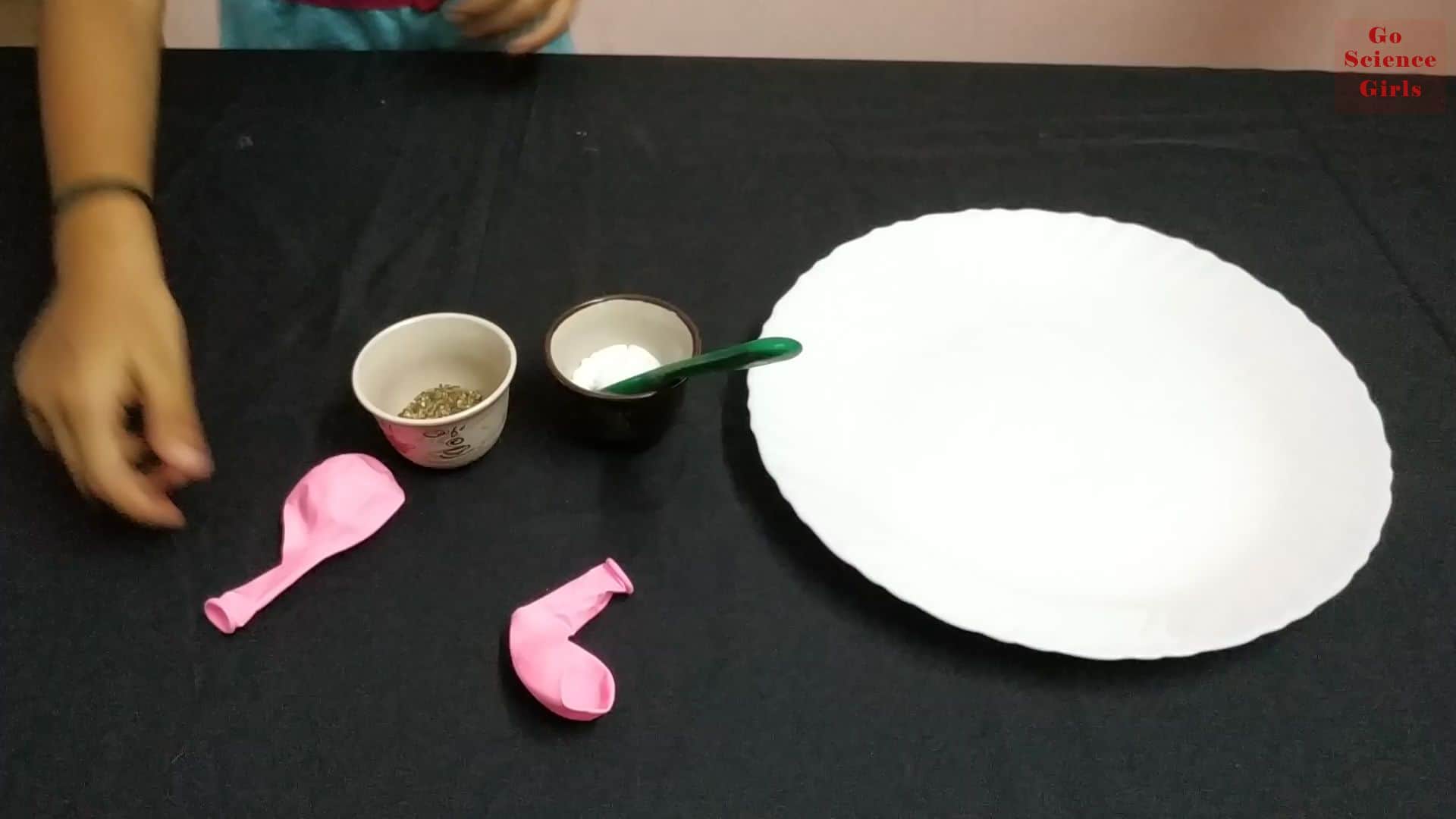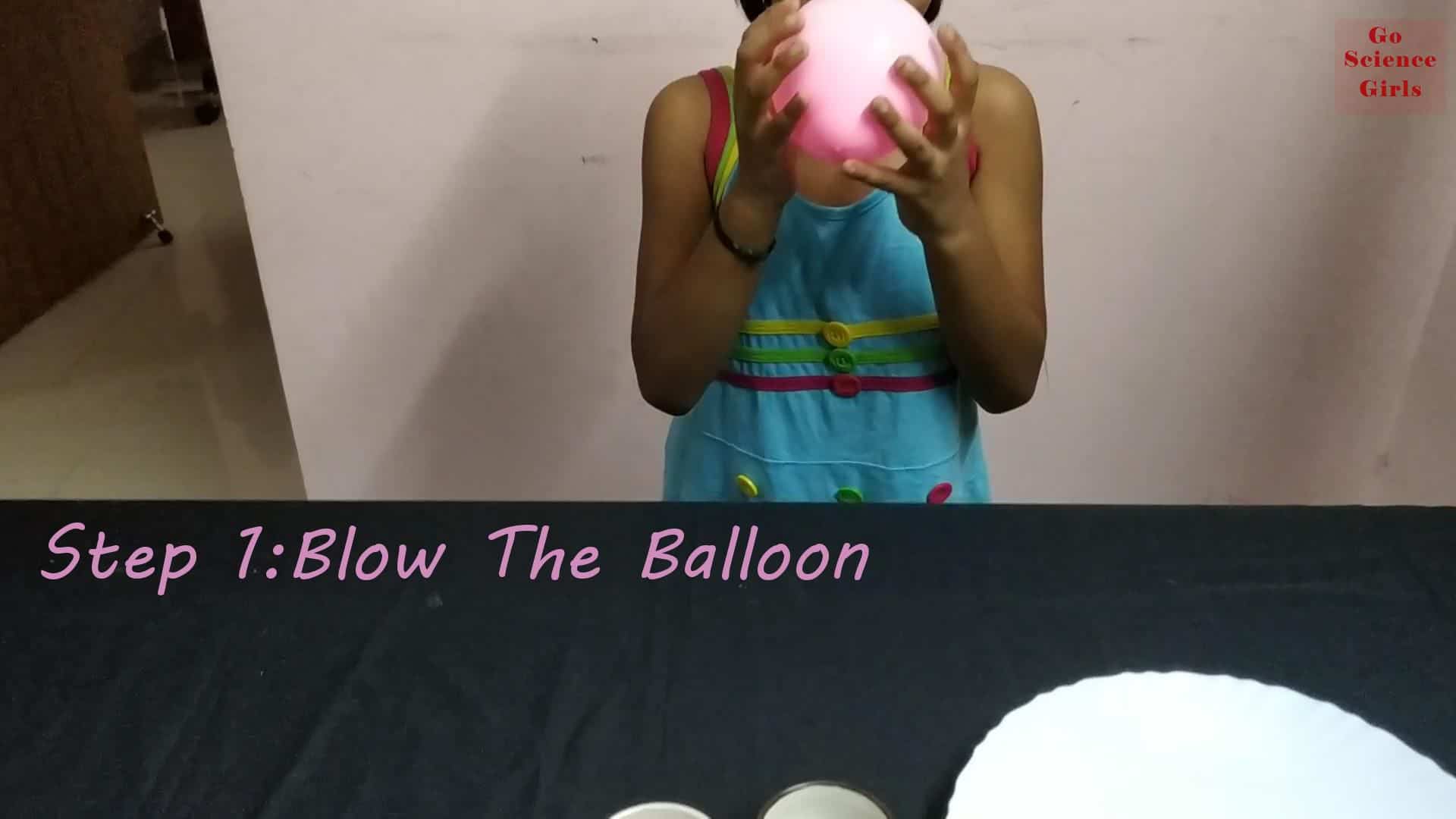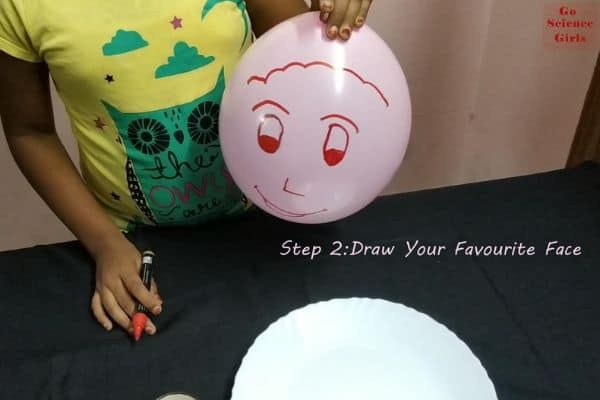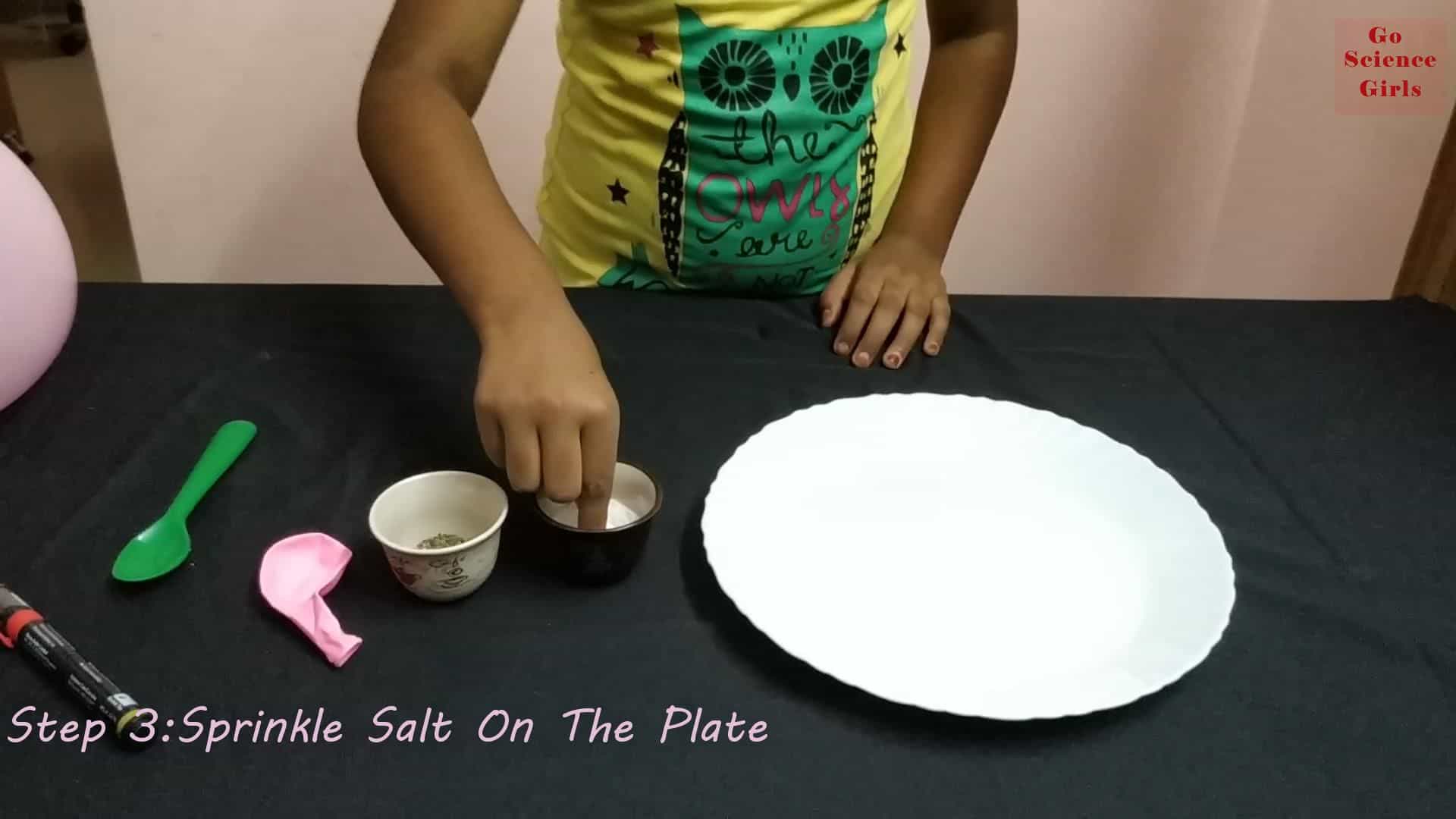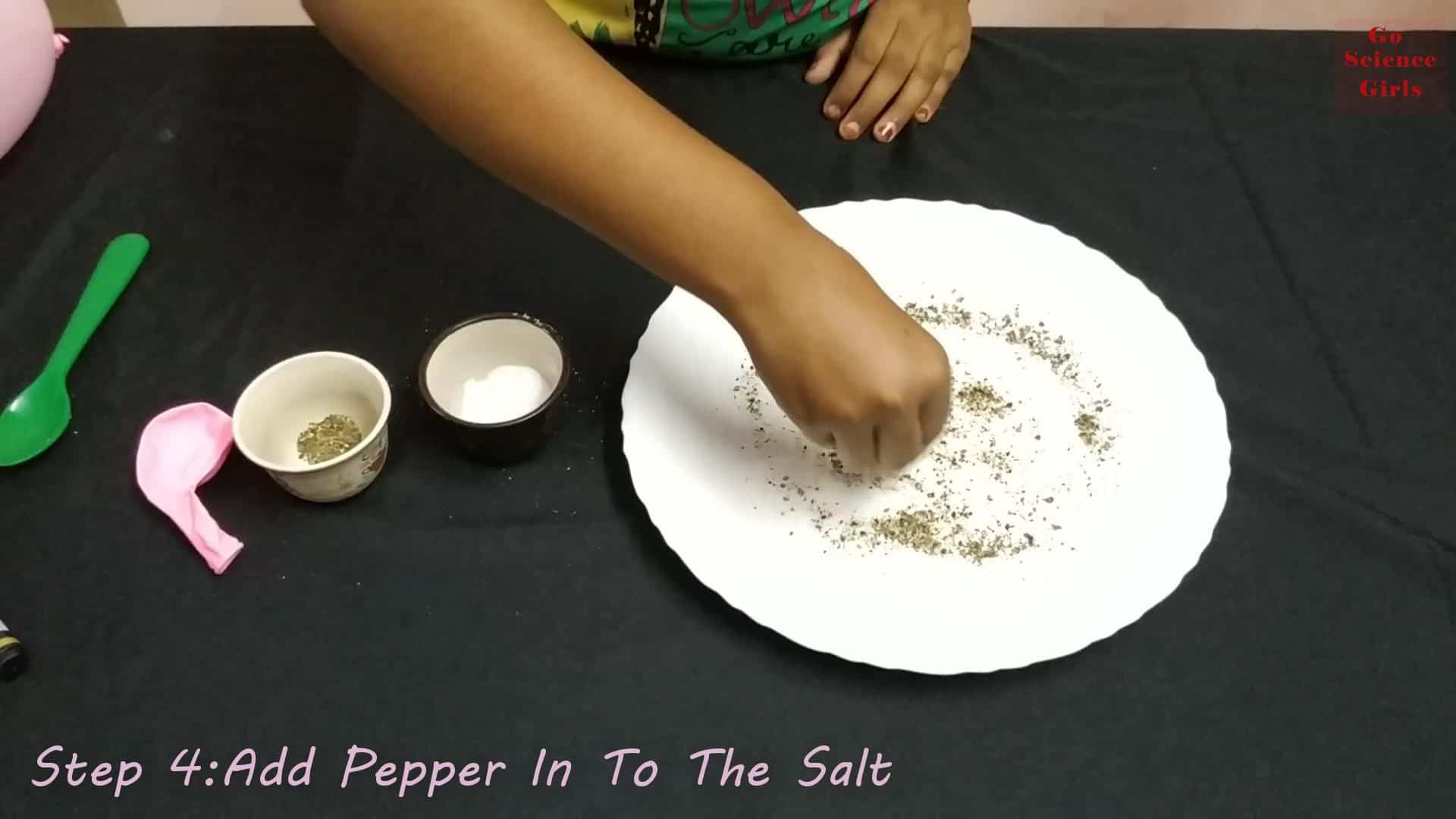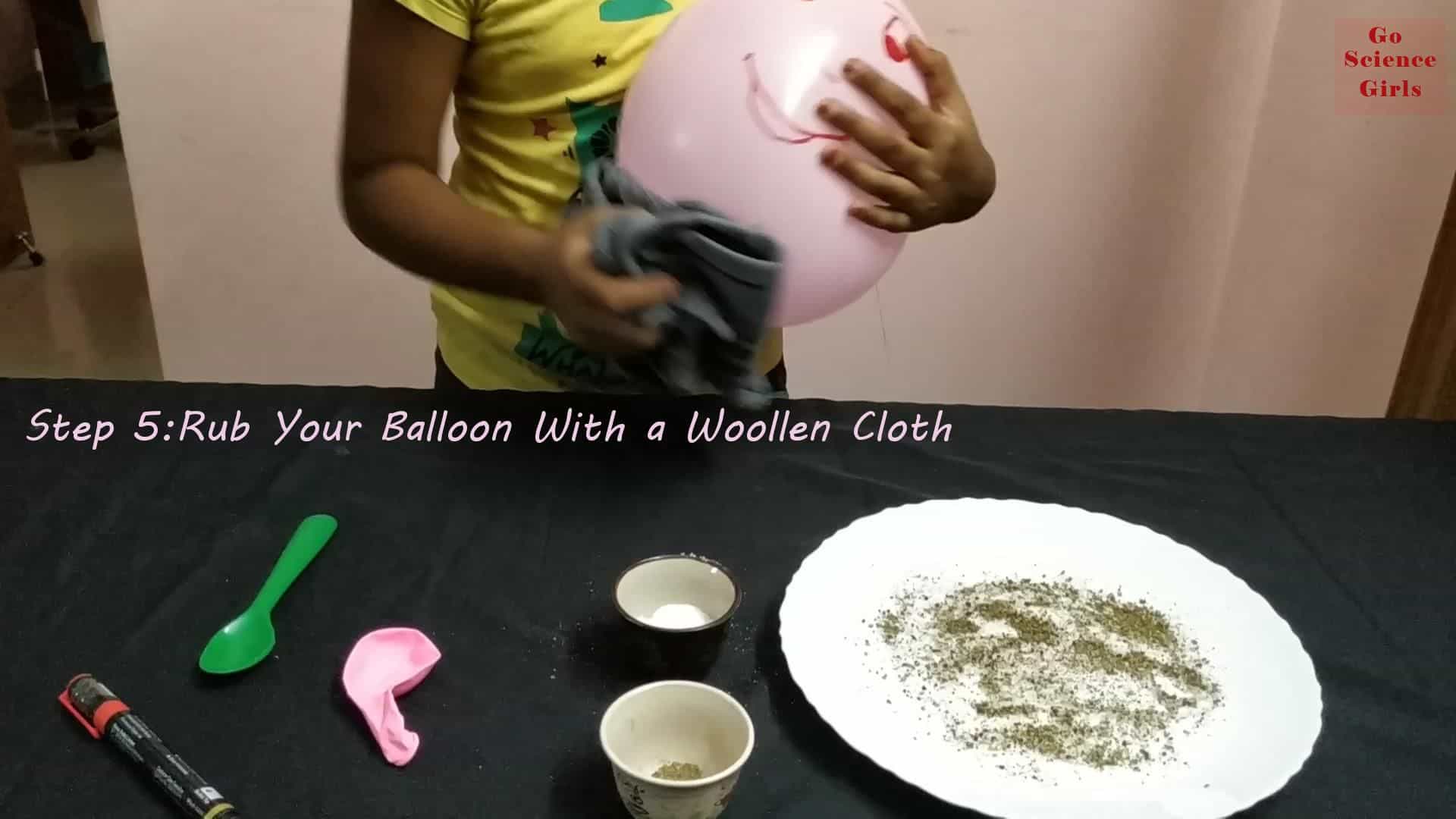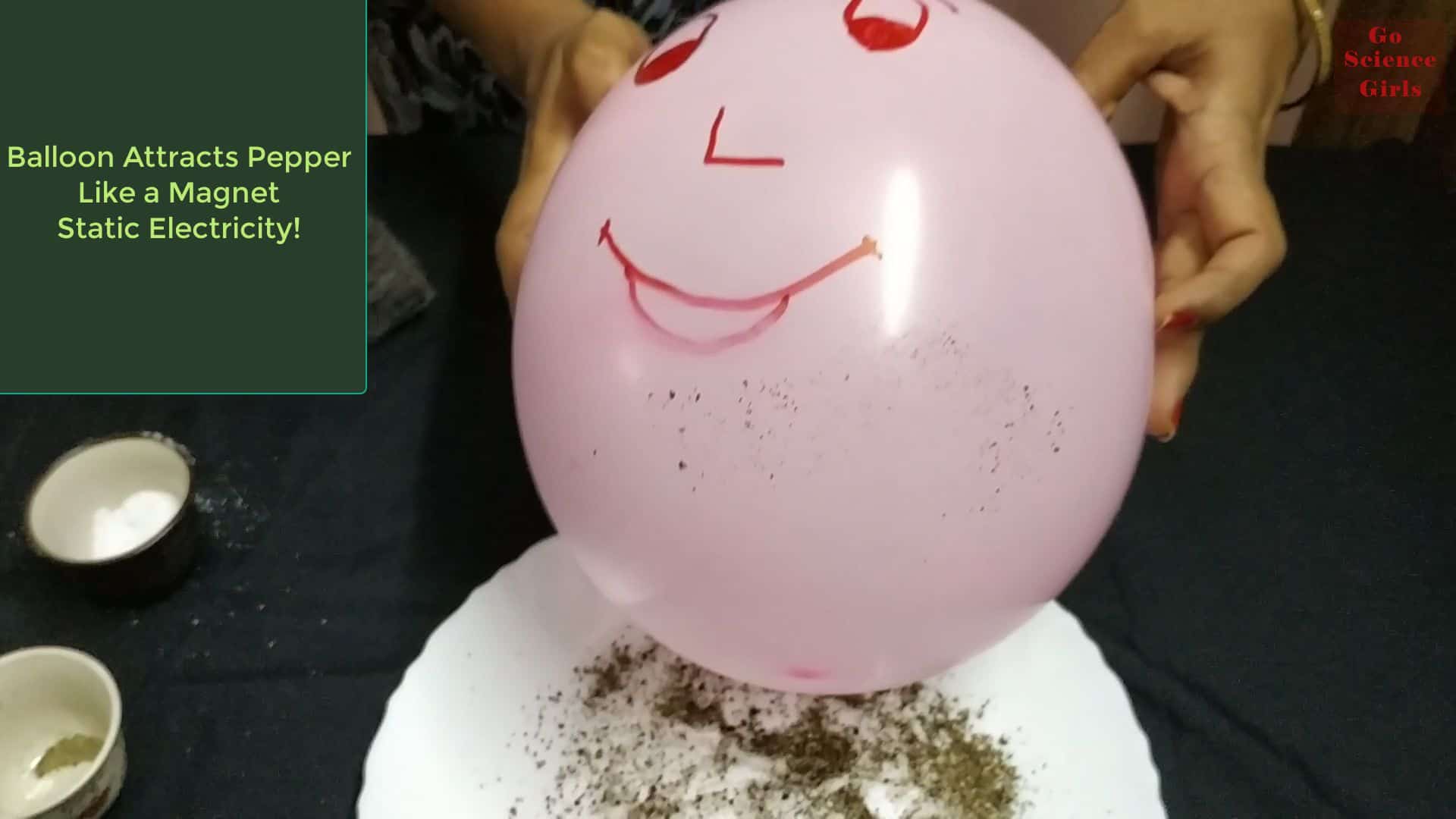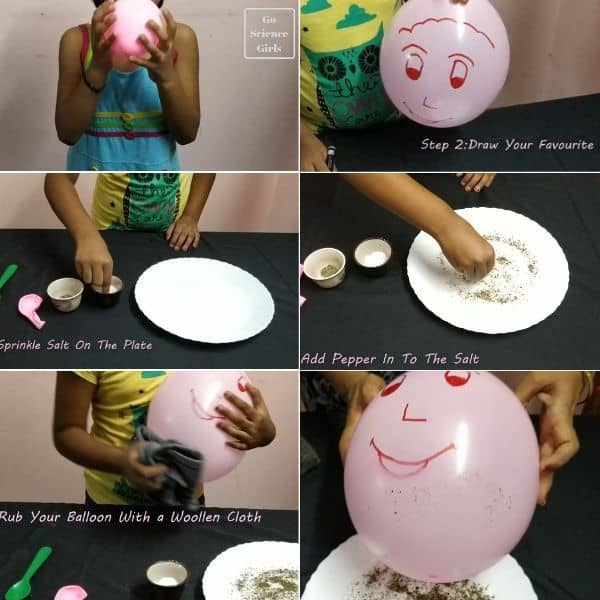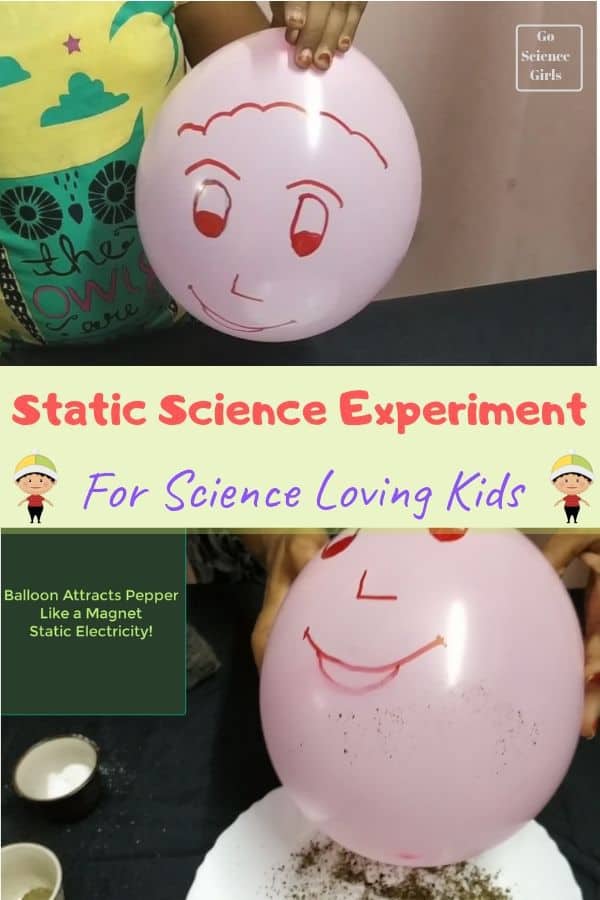Static Electricity Experiment : Well, you all might have seen a balloon magically sticking to something. What could be the reason behind it? Don’t know!! Today’s experiment is all about that. Excited ? continue reading.
What are we waiting for!! My little ones are already near the experiment table with the ingredients we need to start the experiment. Let’s get started.
Balloon, Salt and Pepper Experiment
What do we need ?
We can do this activity with four everyday materials that we find in our home.
- Balloons (any light coloured balloons are preferred so that the kids will be able to observe the experiment clearly)
- Salt
- Ground Pepper
- Dry Woollen Cloth
[*Product links are affiliate links. Your support is highly appreciated]
Steps to get your balloon to attract pepper
My kids are very much excited to grow a stubbly beard to their favourite coloured balloon. Let us know the steps to get such hairy beard to the balloon using our simple science experiment.
Step-1: Inflate the balloon
Tisha (my younger one) was very happy to blow the balloon to the size on which we are able to draw a face (that resembles features of a dad figure). Tie the balloon after blowing to hold the air inside the balloon.
Step-2: Draw a face
As we already discussed in the first step, draw a cartoon face using a permanent marker pen. Do not use sharpened pens as it pops out the balloon.
I can see a glimpse on my younger daughter’s (3yrs old) face after drawing a cartoon face on the balloon. After the experiment she blew few more balloons and enjoyed drawing faces and also tried some different shapes on it.
Step-3: Sprinkle salt on the plate
Ask your kid to measure a spoonful of salt and sprinkle it on to the plate.
Step-4: Add Pepper into the salt
Measure the same quantity of ground pepper and put it into the plate. Now mix both the ingredients.
No wonder, kids are very much interested in mixing any kind of things. My kids are also excited to mix salt and pepper.
Step-5: Rub your balloon with a woollen cloth
- Before rubbing the balloon to a cloth, ask your child to place the balloon near the cracked pepper and observe.
- Ask some questions to your child to check how far they understand the experiment and also they will understand the experiment further easily by following this important step.
- Now ask your kid to charge the balloon by rubbing the dry woollen cloth against it.
Step-6: Bring the balloon near to the salt and pepper
After rubbing to a dry woollen cloth, ask your kid to bring the balloon nearer to the mixture of salt and pepper on the plate.
Kids will be amazed now seeing pepper getting stuck to the balloon without touching. It gives an interesting sound which would increase their curiosity.
Little ones are happy to see the beard formed on to the cartoon’s face they drew on the balloon. In fact, they are surprised to see the magic of sticking pepper to the balloon.
They kept on asking me questions on how did this happen. Even as a mom, I enjoyed showing this fun and simple static science experiment to my kids.
Now it is time to learn the science behind this fun activity.
To make your kids better understand about the experiment we have listed few important questions (some questions are directly from my daughter’s). Have a look!
Why does a balloon attract pepper?
Rubbing a balloon to a piece of dry woollen cloth or fabric gives it a negative charge, also called as static electricity. When the balloon gains enough static electricity, the negative charge attracts neutrally charged surfaces like pepper and salt.
Confused!!!? Let me explain you in detail.
In our experiment, when balloon is rubbed against the cloth, some of the free electrons jump on to the balloon and creates negative charge. When the balloon is brought closer to the neutrally charged pepper, the negative charge on the balloon attracts the pepper.
How does a balloon become charged?
Things are basically are made of atoms, electrons, neutrons, and protons (positively charged). An atom looses an electron resulting in a positive or negative charge. These charges will now attract the opposite forces in some other objects when brought nearer to them.
When the dry woollen cloth is rubbed against the balloon, the free electrons (formed when atoms loose an electron) jump directly on to the balloon and produces negative energy or surface on the balloon.
What will a charged balloon attract?
A charged balloon attracts positive or neutrally charged surfaces. Enough static electricity on the balloon will force it to stick to the opposite forces.
Why does static electricity attract pepper?
When any object is rubbed against another, the surface of the object is charged, that charge is known as static electricity. Static electricity is created because of rubbing which produces negative charge that is carried by electrons.
The electrons further build up to produce static electricity. This static force attracts opposite forces like positive and negative charges. Thus, the static electricity being negatively charged attracts neutrally charged pepper.
Why does salt and pepper separate with static electricity?
Pepper is the lighter body rather than the salt. Hence, static electricity attracts pepper than a salt body.
Is Salt attracted to static electricity?
Both salt and pepper are attracted to the static electricity. As pepper is lighter than the salt, pepper takes less effort to get stick to the opposite charges.
Why does rubbing a balloon charge it?
Rubbing a balloon to a fabric creates negative charge on its surface since the free flow of electrons happens between the cloth and the balloon surface.
How does a balloon make static electricity?
Static electricity is more noticeable in dry conditions. Since the dry cloth is rubbed against balloon, the negative charge is created on the surface of the balloon also knows as static electricity.
What happens when a charged balloon is brought near other materials?
When a charged balloon is brought near other materials, we can observe some “Attractive Forces” between them. We tried with two charged balloons. They both attract each other and get stick to one another. Even the charged balloon will stick with walls. But they would lose charge eventually and drop from the walls.
Is Pepper lighter than salt?
Yes, pepper is lighter than salt.
What materials produce the most static electricity?
The materials that have tendency to cause most static electricity are human hair and skin, dry woollen cloth, leather, rabbit and cat fur, silk, aluminium, paper, lead, glass, and nylon.
How does a body get charged on rubbing?
The free electrons in any object or thing are transferred from one body to another on continuous rubbing thus making one body negatively charged ( one which accepts electrons ) and the other becomes positively charged ( one which looses electrons).
What are 3 ways an object can be charged?
An object (electrically neutral) can be charged by using any of the following methods.
- Charging by friction
- Charging by conduction
- Charging by induction
How static electricity is used to separate mixtures?
Static electricity experiment is the classic activity for kids since they get fascinated by seeing how static electricity separating mixtures.
Static electricity is an imbalance build up of charges. Consider a mixture of salt and pepper. Since the pepper is lighter thus attracted more to the object with static electricity (brought nearer) leaving the heavier granules of salt. Thus, separation of mixtures happen using static electricity.
Though it is a fun and simple experiment for younger kids, there are chances that kids would like to keep objects into their mouth. Let them taste pepper and captures their reactions but make sure your kids don’t put pepper into their eyes. Also, have a look on small burst balloon pieces that cause choking. Make sure your kids are out of reach to the permanent marker pens as they put the nib into their mouth.


